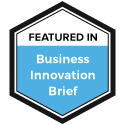
Turning Audiences into Allies: The Role of Human Connection in Brand Success
Turning Audiences into Allies: The Role of Human Connection in Brand Success
In the age of AI, algorithms, and automation, it’s easy to forget the one thing that has always made brands magnetic, human connection. But for Jennifer Kaplan, founder of Evolve PR and Marketing, connection isn’t just a marketing tactic. It’s the soul of sustainable brand growth.
With over 20 years of experience helping brands from startups to social impact ventures get noticed for the right reasons, Jennifer has learned that community is not something you can hack. It’s something you earn. On The Bliss Business Podcast, she shared why the brands that thrive are the ones who move beyond transactional relationships and build genuine alliances with their audiences.
What emerged from the conversation was not just a marketing playbook, but a philosophy rooted in presence, empathy, and showing up when it matters most.
Visibility is Not the Goal, Trust Is
Too often, companies chase media coverage, influencer shoutouts, or viral attention without asking the deeper question: what are we actually inviting people into?
Jennifer argues that visibility without integrity leads to fleeting engagement. “You can’t pay for authenticity,” she said. “You build it by showing up again and again in meaningful ways.” This mindset has informed how she advises founders and CEOs to think about earned media and community strategy.
Whether she’s working with a wellness startup, a food brand, or a purpose-driven tech company, her focus is always the same, helping them understand not just who they’re talking to, but what kind of relationship they want to build.
Presence Over Performance
One of the most powerful themes from the episode was the idea of presence, the decision to be actively engaged in the lives and needs of your community, not just when you’re launching something.
Jennifer described how true connection comes when companies listen more than they speak, when they show up not only with answers, but with curiosity and care. This kind of presence can’t be scheduled in a content calendar. It has to be baked into the company’s culture.
It’s the founder who shows up to community events with no press. The brand that supports local causes even when there’s no ROI report. It’s slow, and sometimes unglamorous, but it creates loyalty that no algorithm can replicate.
Marketing That Reflects Human Values
In a time when consumers are more skeptical than ever, Jennifer sees the future of marketing as a return to what’s real. It’s about understanding human values, not just personas or demographics, and crafting messages that speak to shared hopes, challenges, and aspirations.
This is especially true in moments of crisis or change. Brands that show up in hard times, who take a stand for something beyond profit, and who remain consistent in their values, earn the right to be heard. It’s not about being perfect. It’s about being human.
Jennifer shared several examples of brands that missed the mark by leading with spin rather than sincerity. In contrast, the ones who were honest, even vulnerable, created a depth of relationship that advertising alone could never achieve.
Key Takeaways from the Episode:
- Community is not a campaign, it’s an earned relationship.
- Visibility without values leads to forgettable impressions.
- Authentic connection starts with listening, not pitching.
- Presence is the secret ingredient to brand trust.
- Marketing rooted in human values outlasts trends and tactics.
- People don’t want to be sold to, they want to belong.
Final Thoughts
What Jennifer Kaplan makes clear is that connection isn’t a department. It’s a way of operating. For leaders, marketers, and founders alike, the challenge is to stop asking “How do we get more attention?” and start asking “How do we create belonging?”
The best marketing doesn’t feel like marketing. It feels like a relationship. And the best relationships are built on trust, presence, and shared purpose.
For those willing to make that shift, the rewards go far beyond brand awareness. They create movements. They inspire loyalty. They build community.
And in a noisy world, that’s the kind of signal that always cuts through.
Check out our full conversation with Jennifer Kaplan on The Bliss Business Podcast.
Originally Featured on The Bliss Business Podcast Blog










Recent Comments